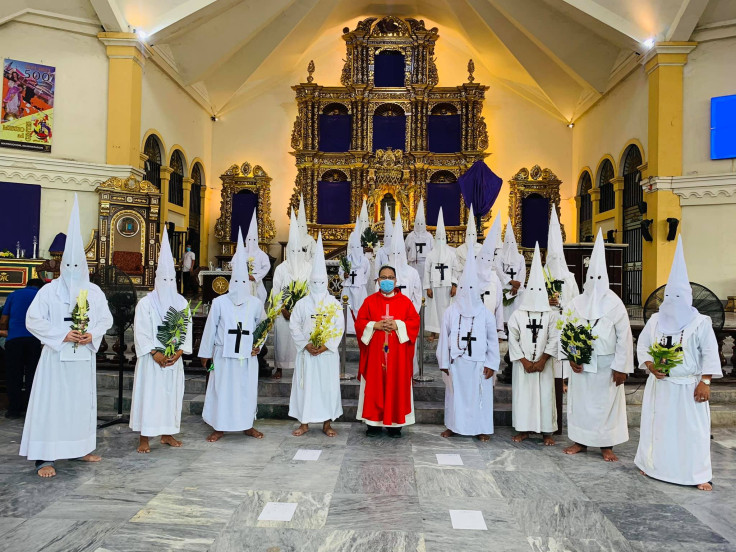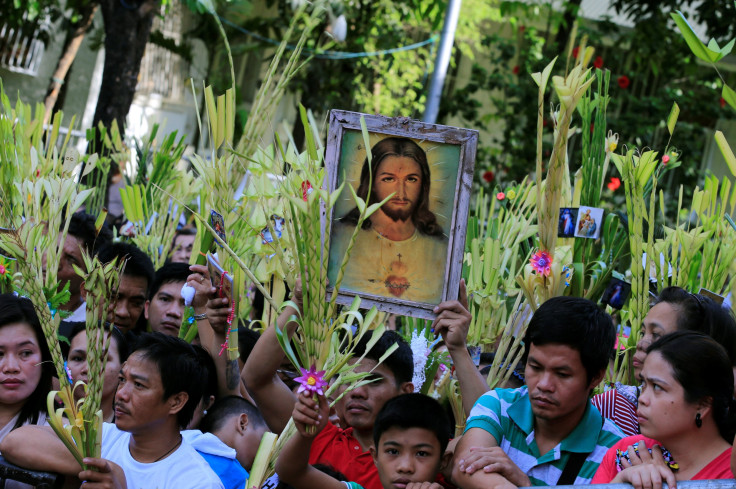Filipino Group Wears Ku Klux Klan-Like Robe, Pointed Mask To Celebrate Holy Week

KEY POINTS
- Catholic confraternity Palo Penitentes' tradition originated from Andalusia, Spain, in the 15th century
- The Palo Penitentes wear white robes and pointed hoods while carrying religious statues
- The Archdiocese of Palo defended their tradition by saying it was a form of penance
A community in the Philippines, which has the third-largest Catholic population in the world, has drawn attention for its unusual way of commemorating Holy Week.
In the Philippine city of Palo in Leyte province, members of a Catholic confraternity or brotherhood called the Palo Penitentes wear white garbs and pointed masks similar to the headpieces associated with the white supremacist and anti-Catholic group Ku Klux Klan in the U.S.
Every year, the all-male group dramatizes the sufferings and death of Jesus Christ for Holy Week processions while barefoot.
Their headpieces, called "Tais-dupol" or "pointed" and "blunt" in English, have been ridiculed by non-Palo residents and internet users through the years.
But Catholic brotherhoods wear the garb to avoid drawing attention to themselves while in penitence.
The Palo Penitentes' attire originated in Andalusia, Spain, in the 15th century, several hundreds of years before the Klan was established in 1865.
The town of Andalusia had Lenten penitents, men and women wearing pointed masks that covered their faces and carrying religious statues during processions as a form of sacrifice, the Manila Bulletin reported, citing an account written by the late Palo archbishop Benjamin Bacierra.
In 1894, Franciscan friar Pantaleon de la Fuente introduced the Spanish tradition to Palo, as he wanted to add drama to the Lenten commemoration in the Philippine town.
De la Fuente ordered sculptured figures depicting Jesus Christ's passion and robes with hoods in three colors from Barcelona, Spain.
In 2021, the Archdiocese of Palo defended the Palo Penitentes' tradition and urged non-Palo residents not to mock it.
"Hopefully, non-residents of Palo (especially fellow Christians) who encounter them, especially on Good Friday may be reminded of the Lord's injunction to pray and offer sacrifices—more so today as we face the pandemic that has been around for more than a year," the diocese said, according to Philippine online news outlet Interaksyon.
"The inconvenience of wearing the long and heavy robes in a humid country like the Philippines underlines the sacrificial character of the activity," it continued.
The church added that the Catholic brotherhood is an "officially recognized parish organization," and their tradition represents the penitential acts of their Filipino parishioners.
The Philippines is also known for other traditions commemorating Jesus Christ's passion during the Holy Week.
Some Filipino Catholic devotees self-flagellate with bamboo whips while walking barefoot as a form of penance.
Brian Lorca, 27, told Reuters that he performs this bloody religious practice believing it can cleanse sins, cure illness and even grant wishes.
After three years of hiatus, the annual crucifixion rites in the Philippine province of Pampanga are set to return this Friday.
Ruben Enaje, 62, was first crucified in 1986 after miraculously surviving a fall from a three-story building.
Enaje said crucifying himself is his way of thanking God for giving him a second chance in life.
This year would mark Enaje's 34th time nailing himself to a cross, but he hinted it could be his last as his age has begun to take a toll on his body, according to Coconuts Manila.
Philippine President Ferdinand Marcos Jr. declared April 6 (Maundy Thursday) and April 7 (Good Friday) this year as regular national holidays.

© Copyright IBTimes 2024. All rights reserved.





















